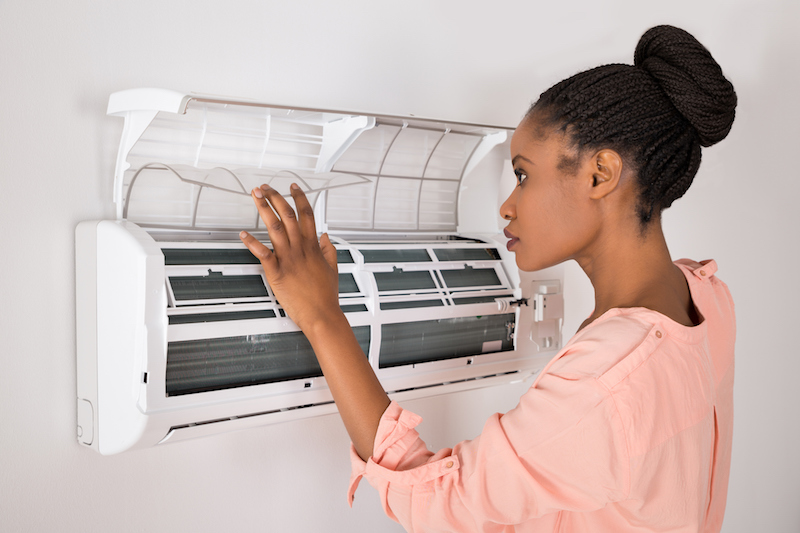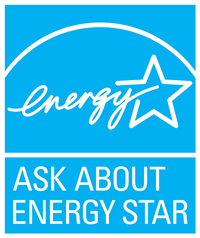
You shouldn’t have to sacrifice comfort or drain your wallet to keep your residence at a pleasant setting during summer weather.
But what is the best temp, exactly? We go over recommendations from energy professionals so you can find the best temp for your home.
Here’s what we recommend for the most energy-efficient setting for air conditioning in Moline.
Recommended Thermostat Settings for Summer
Most people find using the thermostat at 72-73 degrees is ideal. However, if there’s a big difference between your interior and exterior temperatures, your AC bills will be higher.
These are our recommendations based on the U.S. Department of Energy (DOE) and ENERGY STAR®.
While at home: 78 degrees. While that sounds hot, there are approaches you can keep your residence refreshing without having the AC running all the time.
Keeping windows and window treatments down during the day keeps cold air where it should be—indoors. Some window treatments, including honeycomb shades or plantation shutters, are made to offer added insulation and improved energy conservation.
If you have ceiling fans in your home, the DOE says you can increase thermostat settings about 4 degrees warmer without giving up comfort. That’s due to the fact they freshen by a windchill effect. Since they cool people, not areas, turn them off when you leave a room.
If 78 degrees still feels too warm at first glance, try doing a trial for a week or so. Begin by raising your temperature to 78 degrees while you’re home. Then, steadily lower it while following the suggestions above. You might be astonished at how refreshed you feel at a warmer temperature setting.
While away: 88 degrees. There’s no rationale for keeping the AC going all day while your home is vacant. Turning the setting 7–10 degrees warmer can save you as much as 5–15% on your air conditioning expenses, according to the DOE.
When you arrive home, don’t be tempted to put your thermostat below 78 to cool your residence more rapidly. This isn’t useful and usually produces a higher air conditioner cost.
A programmable thermostat is a useful way to keep your temp controlled, but you need to set programs. If you don’t use programs, you run the risk of forgetting to raise the set temperature when you take off.
If you want a handy remedy, think about installing a smart thermostat. This thermostat works with with your phone, so it realizes when you’re at home and when you’re away. Then it intuitively adjusts temperature settings for the best savings. How much exactly? About $180 yearly on heating and cooling, according to ENERGY STAR.
Another benefit of installing a smart thermostat? You can use your phone to monitor and change temperature settings from nearly anywhere.
While sleeping: Around 70 degrees. While ENERGY STAR suggests 82 degrees, that might be too uncomfortable for most families. Most people sleep better when their bedroom is chilled, so that’s why the National Sleep Foundation recommends 60–67 degrees. But that could be too cold, based on your pajama and blanket preference.
We suggest using a comparable test over a week, putting your thermostat higher and gradually lowering it to choose the ideal temp for your house. On pleasant nights, you may find keeping windows open at night and using a ceiling fan is a preferable idea than running the air conditioning.
More Methods to Conserve Energy During Hot Weather
There are other ways you can conserve money on cooling bills throughout warm weather.
- Get an energy-efficient cooling system. Central air conditioners only last about 12–15 years and get less efficient as they get older. A new air conditioner can keep your residence cooler while keeping utility costs small.
- Schedule annual air conditioner tune-ups. Annual air conditioner maintenance keeps your unit running like it should and could help it work at better efficiency. It might also help lengthen its life span, since it helps pros to pinpoint little issues before they cause a major meltdown.
- Put in new air filters regularly. Use manufacturer instructions for switching your air filter. A clogged filter can lead to your system short cycling, or switch on and off too much, and raise your utility.
- Check attic insulation levels. Nearly 90% of houses in the USA don’t have enough insulation, according to the Insulation Institute. The majority of southern climates need 13–14” of attic insulation, while northern climates require 16–18”.
- Have your ductwork inspected. Ductwork that has separated over time can let cold air into your attic, walls or crawl space. This can result in big comfort issues in your house, such as hot and cold spots.
- Seal holes, doors and windows. Keep hot air where it should be by closing cracks. You can also caulk or weather strip doors to keep more conditioned air indoors.
Save More Energy During Hot Weather with J.L. Brady Company LLC
If you are looking to conserve more energy this summer, our J.L. Brady Company LLC pros can provide assistance. Get in touch with us at 309-517-7511 or contact us online for extra info about our energy-saving cooling products.




